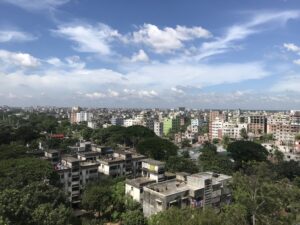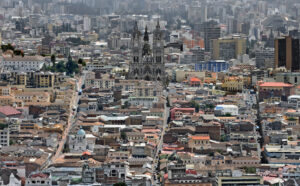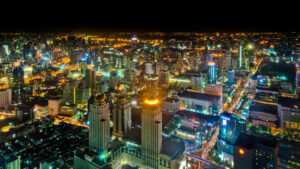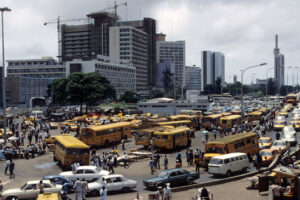The world’s cities, centers of innovation, culture, and progress, are facing unprecedented challenges that could lead to their potential disappearance in the not-so-distant future. These challenges are a consequence of a rapidly changing climate, overpopulation, urbanization, and natural disasters. While it may seem alarmist to predict the complete disappearance of a city, the risks are real, and it’s crucial to address them. In this article, we will explore some of the Famous Cities that can disappear in the near future.
Venice, Italy:
Venice, the “Floating City,” has been a UNESCO World Heritage site for its unique architecture and canals. However, Venice faces the relentless threat of rising sea levels. The phenomenon of acqua alta, or high water, has become increasingly frequent, flooding the city and eroding its foundations. While Venice may not vanish entirely, the continued flooding poses a severe risk to its historic structures and way of life.
Miami, Florida, USA:
Miami’s stunning beaches and vibrant culture have made it a global hotspot. Yet, the city is extremely vulnerable to sea-level rise due to its low-lying coastal location. As sea levels continue to creep up, Miami faces increased coastal inundation, storm surges, and flooding, which could threaten its long-term viability.
New Orleans, Louisiana, USA:
New Orleans is famously located below sea level and is surrounded by a complex system of levees and flood defenses. The city’s very existence is dependent on these barriers. However, with the increasing frequency and severity of hurricanes, New Orleans remains at risk of catastrophic flooding and potential disappearance.
Jakarta, Indonesia:
The capital city of Indonesia, Jakarta, is grappling with a double-edged sword. It is sinking at an alarming rate due to excessive groundwater extraction while also facing rising sea levels. The government is investing in extensive infrastructure projects to mitigate these threats, but the challenges are immense.
Dhaka, Bangladesh:
Dhaka, one of the world’s most densely populated cities, is threatened by rising sea levels and monsoon flooding. The city is struggling to cope with the rapid urbanization and the associated environmental challenges, putting millions of lives and livelihoods at risk.
Kiribati and Tuvalu:
Although not cities in the traditional sense, these small island nations in the Pacific face the ultimate threat of submersion due to rising sea levels. The very existence of these nations is at stake, leading to discussions about potential mass migrations and loss of cultural heritage.
Shanghai, China:
Shanghai, one of China’s largest and most economically vibrant cities, is at risk due to its low-lying coastal location. It is vulnerable to sea-level rise and faces increased threats from typhoons and storm surges, which could impact its future development and sustainability.
Quito, Ecuador:
The capital city of Ecuador is situated in a high-altitude basin surrounded by volcanic peaks. It faces the potential threat of volcanic eruptions, landslides, and earthquakes. While the risk of complete disappearance is low, the city must remain vigilant and prepared to respond to these natural hazards.
Cape Town, South Africa:
Cape Town, known for its stunning coastal beauty, has been grappling with recurring droughts and water shortages, exacerbated by climate change. The city’s future hinges on its ability to manage its dwindling water resources and adapt to a changing climate.
San Francisco, California, USA:
San Francisco, located along the Pacific Ring of Fire, is at risk of earthquakes and tsunamis. While it may not entirely disappear, the city faces the constant threat of seismic events that could cause significant destruction and disrupt the lives of its residents.
Bangkok, Thailand:
Bangkok, known as the “Venice of the East” for its intricate network of canals and waterways, is threatened by sinking ground levels and rising sea levels. The city’s infrastructure, including its historic temples and palaces, faces an uncertain future as it grapples with these challenges.
Lagos, Nigeria:
Lagos is not only one of Africa’s most populous cities but also one of the fastest-growing cities in the world. Rapid urbanization, coupled with inadequate infrastructure and poor urban planning, has left the city exposed to flooding, erosion, and the risk of becoming uninhabitable in the coming decades.
Mitigation and Adaptation Efforts:
Efforts to address these threats are ongoing. Many cities are investing in flood defenses, seawalls, and sustainable urban planning. Climate change mitigation, such as reducing greenhouse gas emissions, is a crucial part of the solution. International agreements like the Paris Agreement are also important in this context.
Conclusion:
While predicting the complete disappearance of a city may be an overstatement, the challenges these urban centers face are genuine and alarming. The future of our cities depends on our ability to adapt to a changing climate, invest in resilient infrastructure, and make sustainable choices. Only through global collaboration and a concerted effort to mitigate and adapt to these challenges can we ensure that these cities, and many more, continue to thrive in the face of an uncertain future.


























